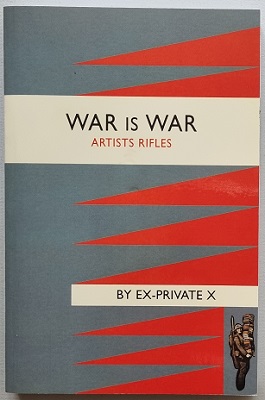Description
Title: The Cast Iron Sixth, A History of the Sixth Battalion London Regiment (The City of London Rifles) 1914 – 1918
Author: Captain E.G Godfrey, MC
Condition: Mint
Edition: 2nd Edition
Publication Date: 2002
ISBN: 9781843421702
Cover: Soft Cover without Dust Jacket – 280 pages & 18 maps
Comments: History of a London unit – first raised by the artist George Cruikshank in 1859 – during the Great War. Covers Loos, the Somme, Bullecourt, Messines, and Third Ypres, with awards and Roll of Honour (1050 dead).
The 6th battalion, London Regiment, was raised in 1859 by the celebrated artist, George Cruikshank, with the title 24th Battalion, Surrey Regiment, a unit of the Volunteer Corps formed in that same year. Four year later the title was changed to the 48th Battalion, the Middlesex Regiment. After another couple of changes the battalion became, in 1908 when the Territorial Army was created, the 6th (City of London) Battalion The London Regiment (City of London Rifles) – to give it its full title.
At the outbreak of the Great War, the battalion was in the 2nd London Brigade, 1st London Division, and at the end of August a duplicate or second line battalion was formed, and the two battalions were named 1/6th and 2/6th. In November 1914 the 1/6th was transferred to 4th London Brigade, 2nd London Division, later 140th Brigade, 47th Division with which it remained till January 1918. It landed in France in March 1915 and fought its first major action at Loos that September. Subsequently it was on the Somme, and at Messines, Third Ypres and Cambrai.
At the end of January 1918 the battalion was disbanded, and some 260 officers and men joined the 2/6th, then in 174th Brigade, 58th Division, which now became 6th Battalion. 2/6th arrived in France in January 1917 with 58th Division, and its first major action was at Bullecourt. Later it took part in the Third Ypres battles, before absorbing a draft from the disbanded 1/6th and becoming 6th Battalion, which remained in 58th Division to the end of the war. This history begins with the names of divisional and brigade commanders under whom the battalion served, followed by the Honours list where all recipients are named, except for Mention in Despatches where totals are given.
The early history of the battalion is briefly narrated before the Great War, which takes up the bulk of the book. In addition to details of actions fought, in each chapter attention is given to some particular aspect of military training or operations, such as communications between front and rear, transport difficulties, individual exploits and so on, while to facilitate reading, at the head of each page appears the number of the battalion being discussed. The book ends with the Roll of Honour (1050 dead) and an index.





